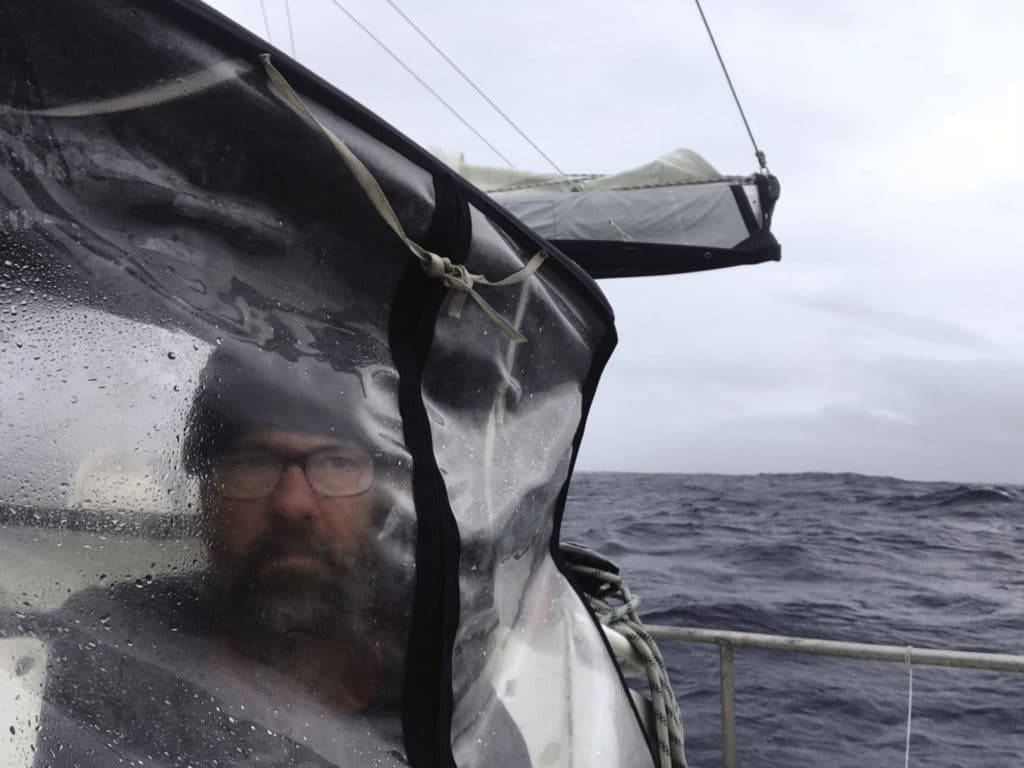
“Reeves, you are a beacon on the shoals of life,” a man yelled from up the dock. All morning I worked on deck. The weekend had emptied the boatyard, quieting the bustle of lifts and cranes. Today there would be no interruptions from passersby, and I could happily focus on the present task: preparing Moli, my 45-foot aluminum cutter, for her second figure-eight-voyage attempt. Then the voice: “I am thrilled to follow your adventure,” the man said. “You show me places I never wish to go; you have experiences I never wish to have. You are a warning to others: ‘Pass not this way.’”
Such sentiments, I had found, were not uncommon, and even I had to admit that the first figure-eight attempt—a solo circumnavigation of the Americas and Antarctica in one season—had not exactly gone to plan. The plan, in brief, was to sail the Pacific south from my home port of San Francisco, and, after rounding Cape Horn, to proceed on a full east-about trek of the Southern Ocean; after rounding Cape Horn again, the course would proceed up the Atlantic, into the Arctic, and then would transit the Northwest Passage for home. Admittedly, it was a challenging goal.
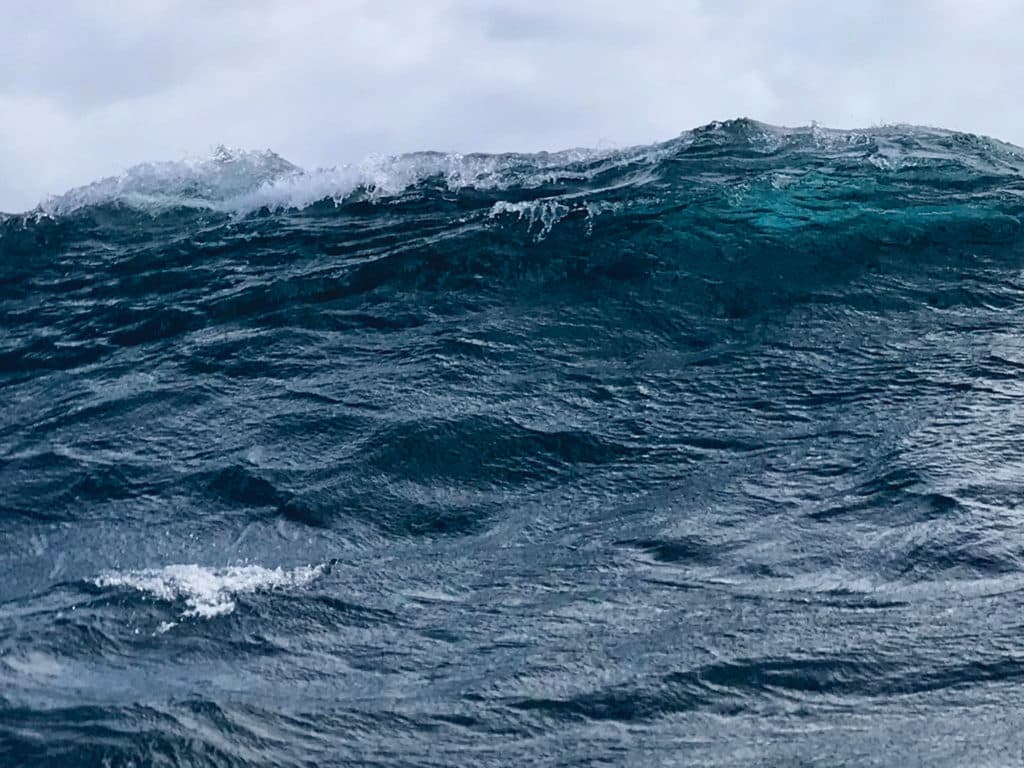
Mo and I departed for the first time via the Golden Gate Bridge on September 30, 2017, but heavy weather knocked Mo flat west of Cape Horn and then again in the Indian Ocean. The former incident dealt fatal blows to both self-steering devices; the latter broke a window in the pilothouse, drowning most of Mo’s electronics. Both required unscheduled stops for repairs, by which time it was too late in the season to continue. The only logical solution: Sail home and start again.
RELATED: My Seventh Circumnavigation
On July 10, 2018, Mo and I returned under the Golden Gate Bridge, closing the loop on a 253-day 26,453-mile solo circumnavigation, which some had dubbed, and not by way of a compliment, “the longest shakedown cruise in history.” Three months later found me in the boatyard readying Mo for her second attempt when the stranger’s words broke my solitude.
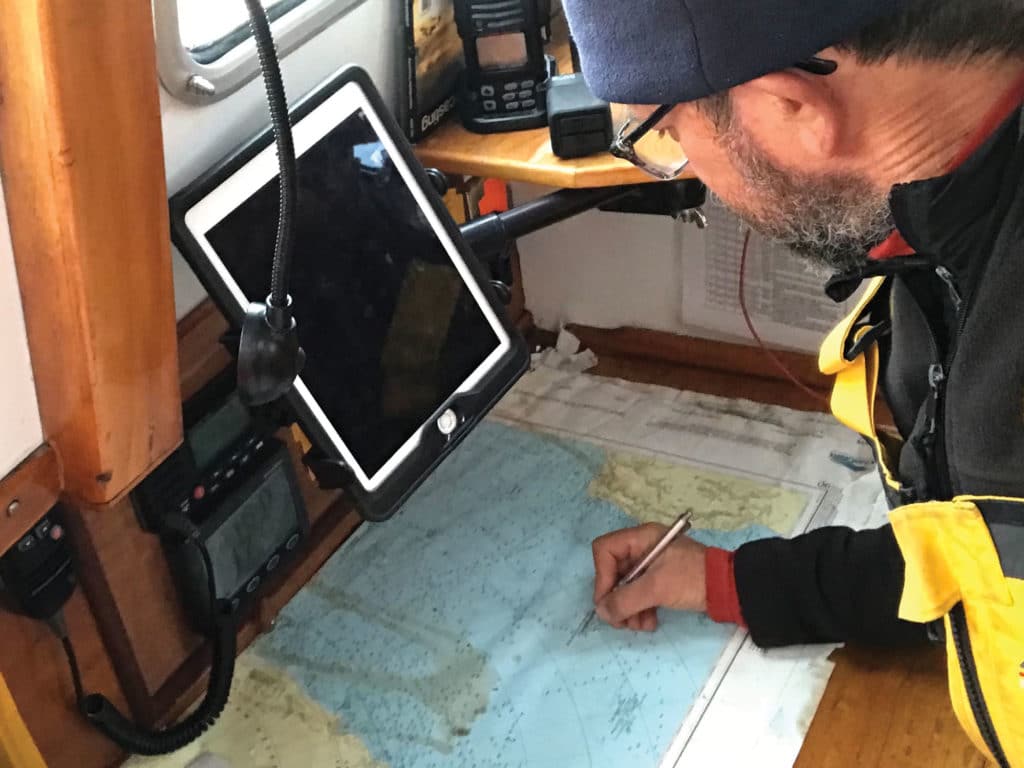
Departure day came on October 1, 2018. Indian summer in San Francisco is warm but windless. Mo motored under full sail out to sea—and with an escort fleet of exactly one vessel. On departure the year before, I had looked to the horizon from under a cloud of foreboding, but now I felt relaxed. Now I knew what lay ahead, and I had a plan.
Our first test of this second attempt came in the Pacific at 49 degrees south, in the form of a Force 8 and 9 northwesterly blow lasting four days. My assessment of the previous year’s failure was that I’d not sailed fast enough. From the beginning, I had intended to follow the example of heroes such as Vito Dumas and Bernard Moitessier and keep moving through the worst of blows, but as conditions eased and seas stood up, I made the repeated mistake of staying on the tiny storm jib for too long. Counter to all intuition, speed is safety for a heavy boat in heavy weather because it provides the rudder with needed corrective power when the extremities of motion are making control a precious commodity. Thus, my vow on this second attempt was to keep up speed, to carry more sail—to leave the damned storm jib in its bag.
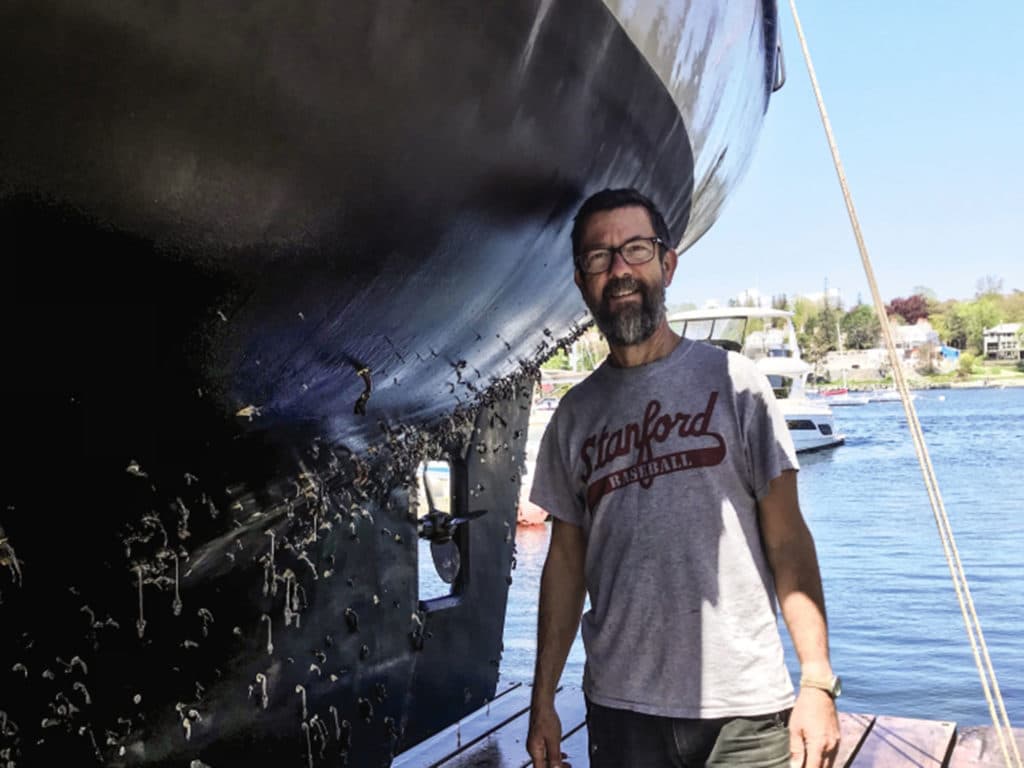
By day two of this blow, we were surrounded by great blue heavers with long troughs and cascading tops. On a deeply reefed working jib (over twice the sail area I’d carried on previous occasions), Mo rushed along with a steadiness that thrilled me. Several times she surfed straight down a massive wall, throwing a bow wave whose roar rivaled that of the gale. But she never faltered. Standing watch in the security of the pilothouse and amid this orchestrated chaos, I felt my satisfaction growing. Now we had a chance at a full circuit of the south, I thought. Soon I found myself whistling happily with the whine in the rigging. Only later did I recall with embarrassment that whistling in a blow is terribly bad luck, and forthwith, I scrawled instructions on a piece of duct tape fastened to the companionway hatch by way of reminder: “No Whistling Allowed!”
And then it was time for the Cape Horn approach. Out of prudence and heartfelt respect, I had planned this rounding to pass south of Islas Diego Ramirez, a group of rocks 20 miles below the Horn and on the edge of the continental shelf. South of these is open water of true, oceanic depth, but between Diego Ramirez and the Horn, the bottom quickly shelves to as little as 300 feet. Here, seas unmolested by land since New Zealand can pile up dangerously when weather is foul. In this case, however, a low sky brought only a cold and spitting rain. We had a fast wind but an easy sea, and on November 29, 56 days out of San Francisco, Mo and I swung in so close to the famous Cape that we could kiss her on the shins.
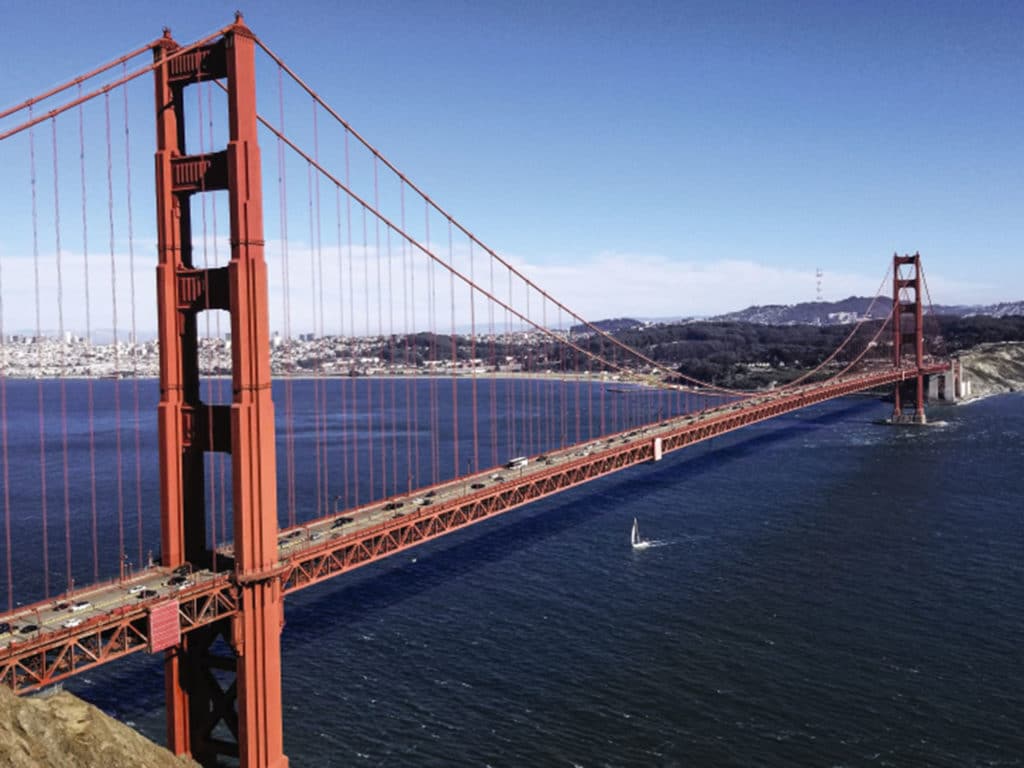
By morning, the headland could still be seen as a black smudge on the gray horizon astern. Mo creamed along under twin headsails in a brisk southwesterly, and as the water of the Pacific blended into that of the Atlantic, so my pride at the summit just attained was quickly cooled by thoughts of the challenge ahead.
My Southern Ocean strategy was simple: to stay as far south as I dared. There were two reasons for this. One was that at my target latitude of 47 degrees south, the circumference of the circle from Cape Horn to Cape Horn again was almost 2,000 miles shorter than at the more-typical rounding latitude of 40 degrees south. Secondly, Mo would wallow in fewer calms. The monstrous lows that march endlessly below the capes tend to hoover up everything around them, leaving vast windless spaces in between. The farther north of the lows one sails, the longer the calms last; the farther south, the more consistent the wind.
On a deeply reefed working jib (over twice the sail area I’d carried on previous occasions), Mo rushed along with a steadiness that thrilled me.
As it turned out, a lack of wind would not be a problem during this passage. By early December, we were above the Falklands and had turned to an easterly course when our first major low approached. Its winds built during the day but really came up to force overnight, with the anemometer touching 45 knots and gusting higher. The main had been doused, the boom lashed to its crutch, and the working jib was deeply reefed. The sea continued to build. Near midnight, I was dozing fitfully in my bunk when I felt Mo lift sharply, then there was a heavy slam of green water hitting the cockpit and companionway hatch. The boat rolled well over, and I rolled with her from my bunk and onto the cupboards. Then she righted, and I could hear the tinkling and splashing of water in the pilothouse.
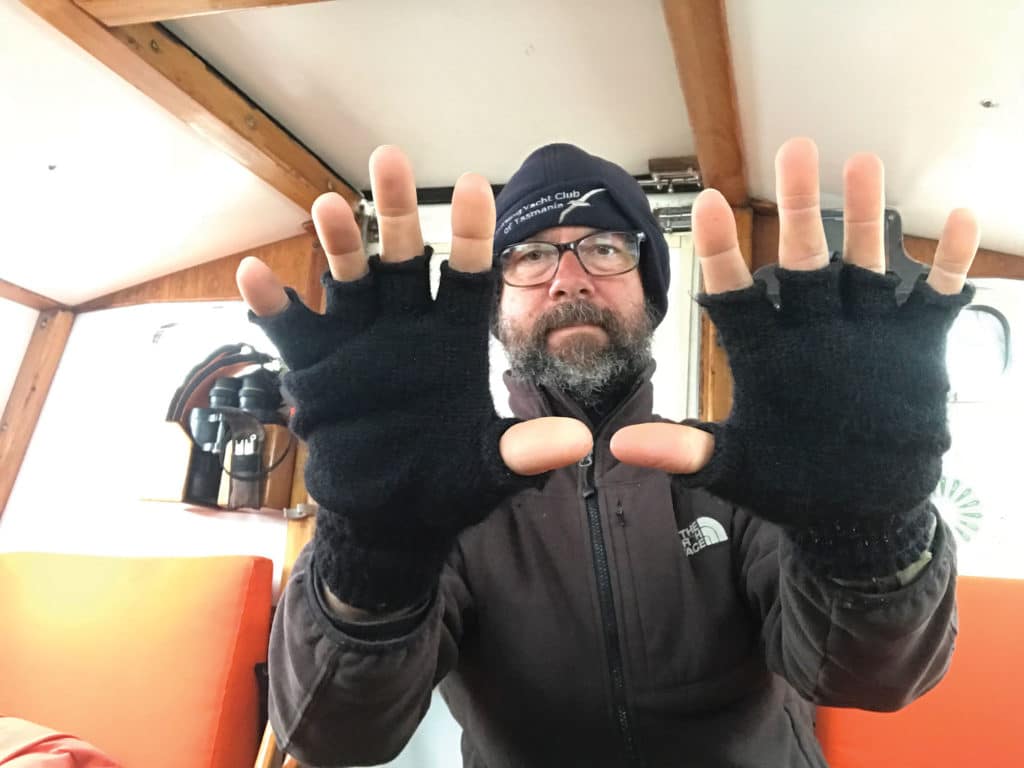
I groaned at the thought that we’d yet again broken something vital. Grabbing a flashlight, I crawled into the pilothouse but found no shattered glass. In the cockpit, the dodger’s plastic door had been ripped open and the windvane paddle had been pulled from its socket. We had been badly pooped, but all that streaming wet below was from nothing more than the wave squirting in between the companionway hatch’s locked slide. “Keep the water out,” was Eric Hiscock’s advice for those making a Southern Ocean passage. As it turns out, this is rather more difficult than it sounds.
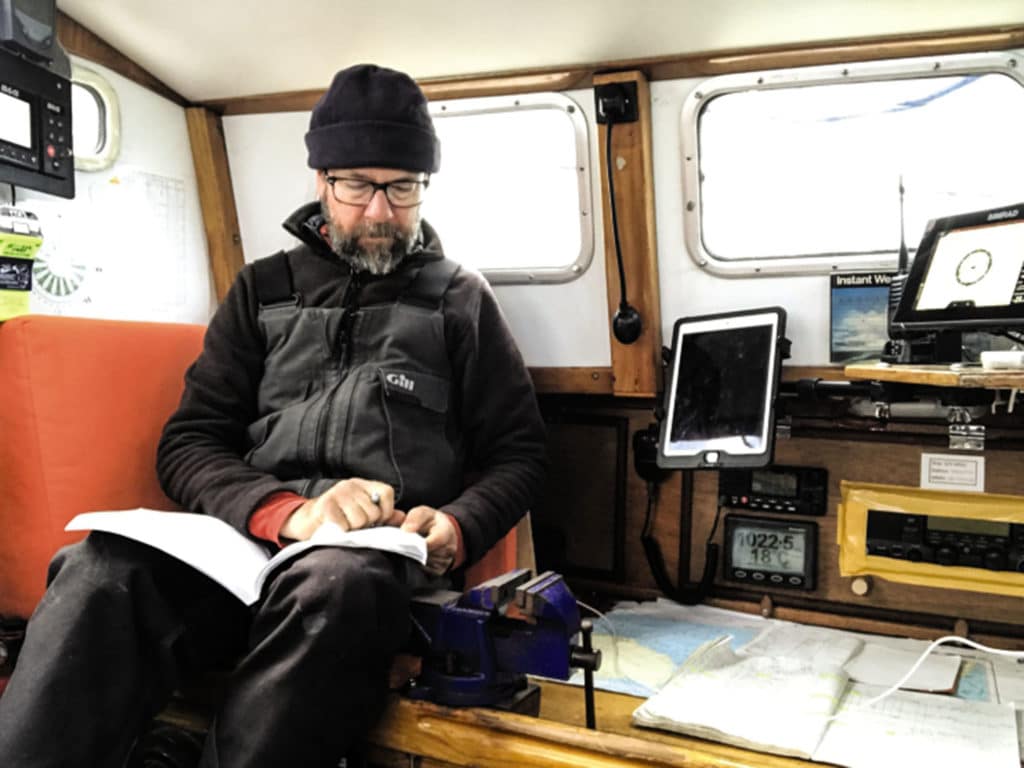
Two weeks later and halfway to Good Hope, we’d already ridden out three gales, and two more were in the forecast. My log was a succession of “large low arrives tonight”; “winds 35 gusting 45″; “chaotic seas—wind continues to build”; “the ocean is like a boulder garden”; “another low on the way.” By Christmas, we were well past the prime meridian and into the Indian Ocean. So far Mo had averaged a fast 140 miles a day, and the storm jib hadn’t budged from its position lashed onto the rail.
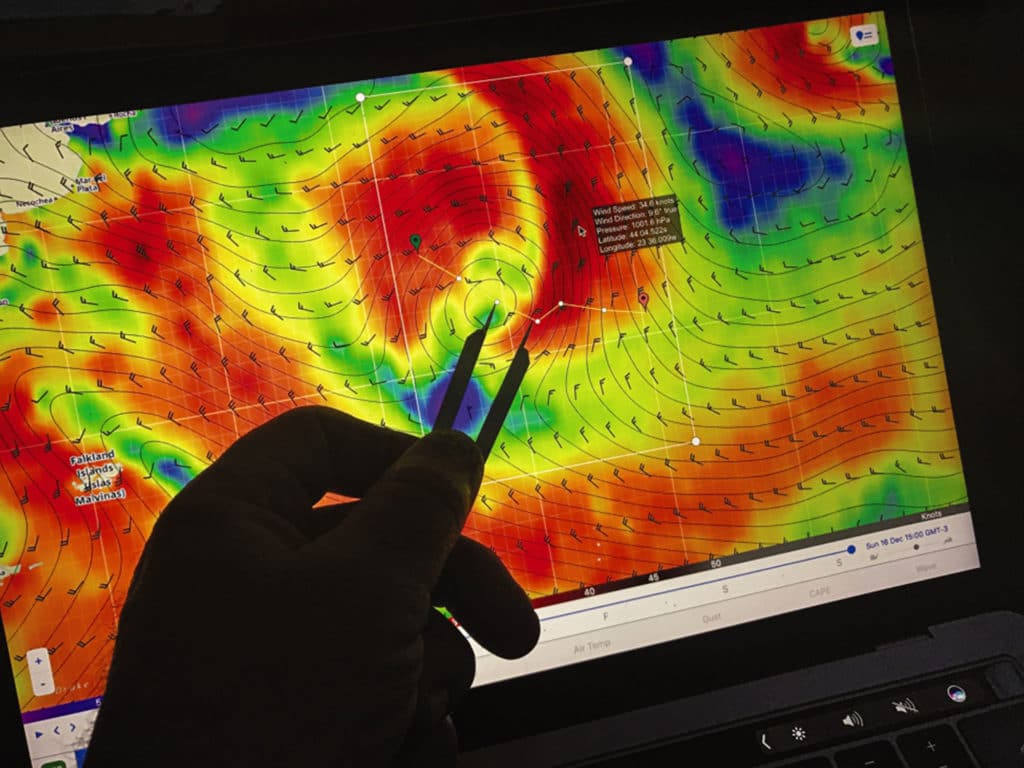
The most dreaded of questions an adventurer can face is why—why pursue such long, lonely, tiresome, risky voyages? At first, such inquiry caught me off guard, and my responses were halting. Wouldn’t anyone, given the opportunity, put at the top of his priorities list a solo sail around the world?
To me the answer is an immediate “yes.” But to others, and when the endless days of discomfort are weighed in—the sleepless nights, meals eaten from a can, the perpetual, clammy damp, hands so raw that the skin sloughs off, the gut-gnawing fear of an approaching storm, the inescapable wrath of a heavy sea, and months of exposure to a remoteness that makes the crew of the space station one’s nearest neighbors—when all that is known, most would choose not to go to sea and regard as crazy those who do.
The monstrous lows that march endlessly below the capes tend to hoover up everything around them, leaving vast windless spaces in between.
But here’s the attraction: Sailing the Southern Ocean is like exploring an alien world. Down here, there isn’t the evidence of civilization that one finds in other oceans. Down here, there are no ships on the horizon, no jet contrails in the sky; no plastic trash ever clutters one’s wake. For months on end, there isn’t so much as a lee shore, and the waves, freed from all confinement except gravity, roam like giant buffalo upon a great, blue plain.
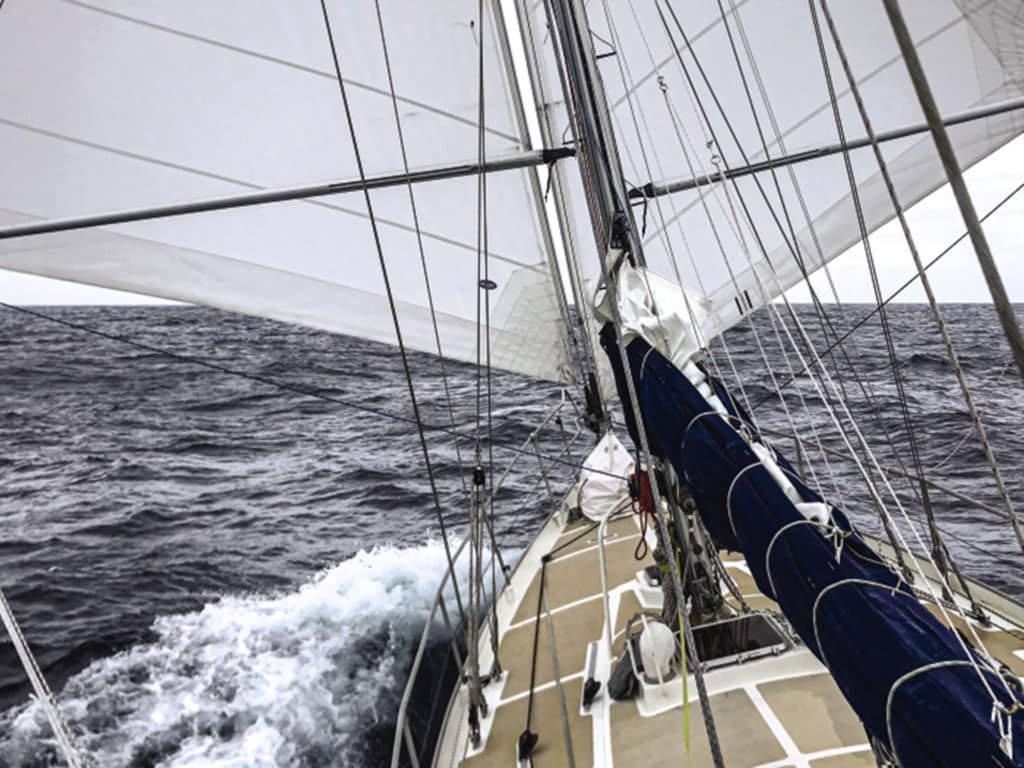
Moreover, down here, the animals one encounters live in such a purity of wildness that you could well be their first human encounter. Many days Mo and I were visited by that absolute marvel, the wandering albatross. As big as a suitcase and with a 12-foot wingspan, this bird lives most of its life on the wing and beyond the sight of land. It can glide in any direction in any strength of wind; so adapted is it to this environment that it can even sleep while aloft. When my little ship is struggling to survive, this bird hangs in the air with an effortlessness that defies understanding. There, above that crashing wave, it is poised so still as to seem carved out of the sky.
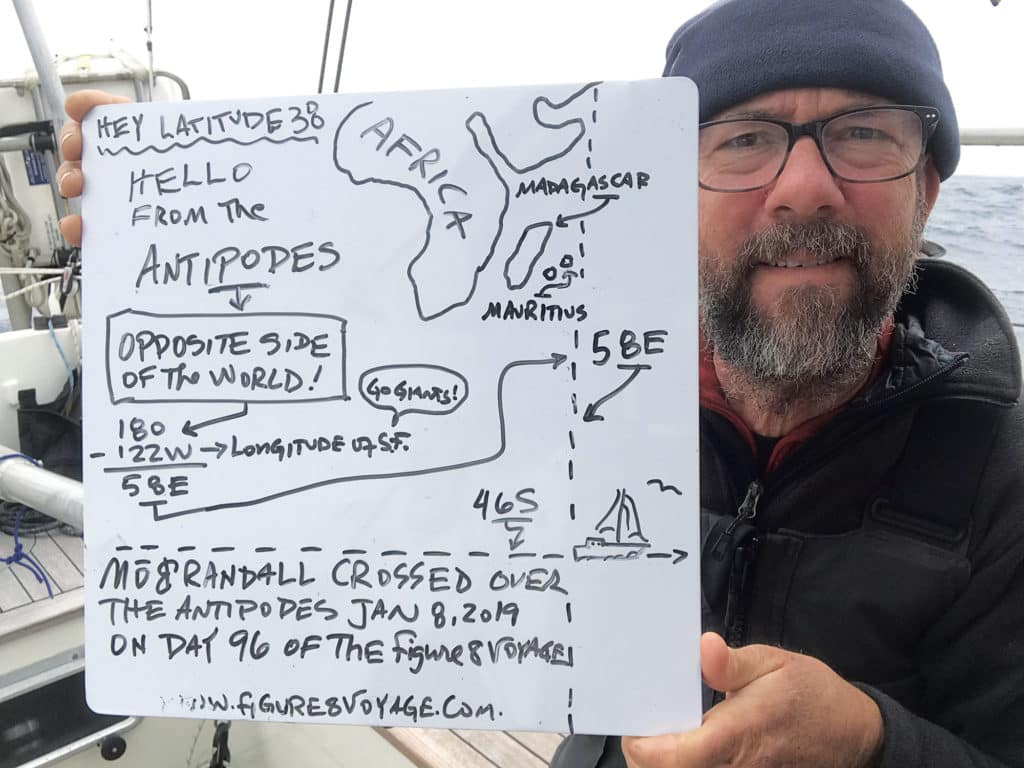
Or take the stars. Out here, on a clear and moonless night, the heavens shine such that our brother constellations recede into the melee of twinkling and are lost. On such a night, looking upward with binoculars is like dipping one’s hands into a basket of pearls. Look down, and galaxies of phosphorescence spin in your wake.
By January 18, Day 105 out of San Francisco, we were nearing the opposite side of the world and the halfway point in our circuit of the south. After dinner, I noticed that the barometer had dropped from 1,010 to 1,002 mb in a mere four hours. What had been an easy 20-knot westerly soon veered into the north and hardened. At midnight, I dropped the poled-out twin headsails and raised the main. Winds continued to build, and by 0200, the main was down again and lashed to its boom.
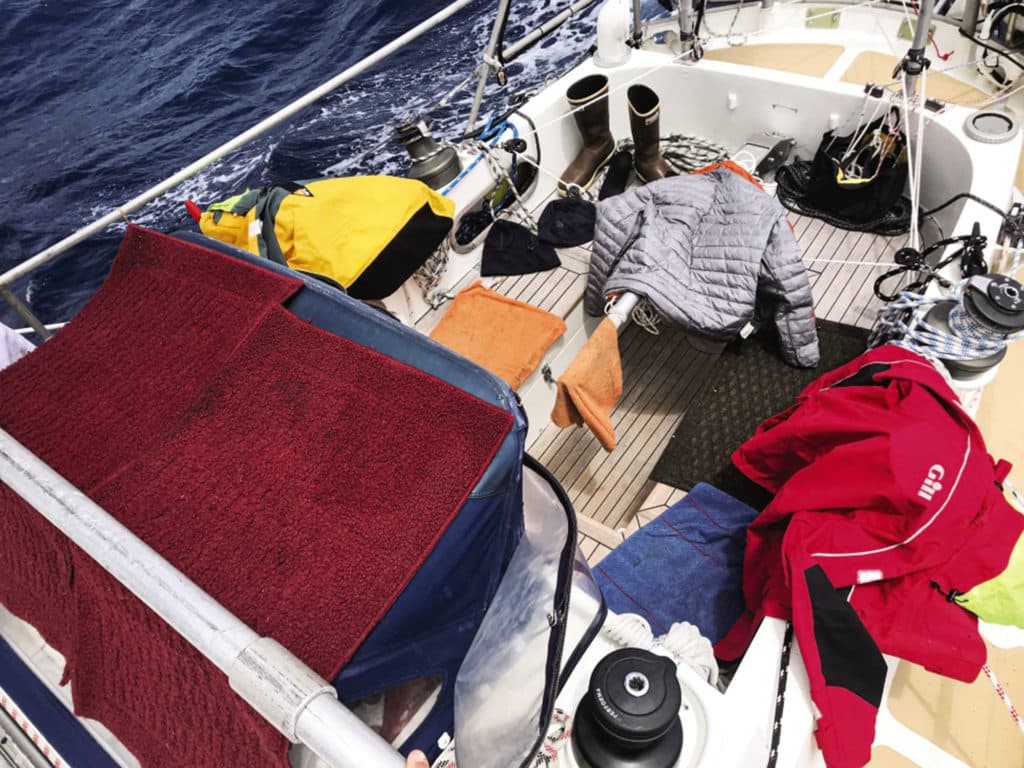
By 0400, pressure had reached 998, and brought with it a freight train of wind from the northwest. Now there was just enough light to make out the cement-colored sky pushing down upon the water. Seas were smack on the beam but manageable.
The front hit at 0600 with winds of 40 gusting to 45 and a pelting, horizontal rain. Crests of waves were blown off; the barometer dropped another 2 points. When it passed, the gale settled down to do its business. Long, wide crests of sea broke together and stained the black water with city-block-size patches of cream and ice blue. The barometer kept on sliding. At each two-hour log entry, it was down another 2 points. Four reefs in the working jib, Mo laboring.
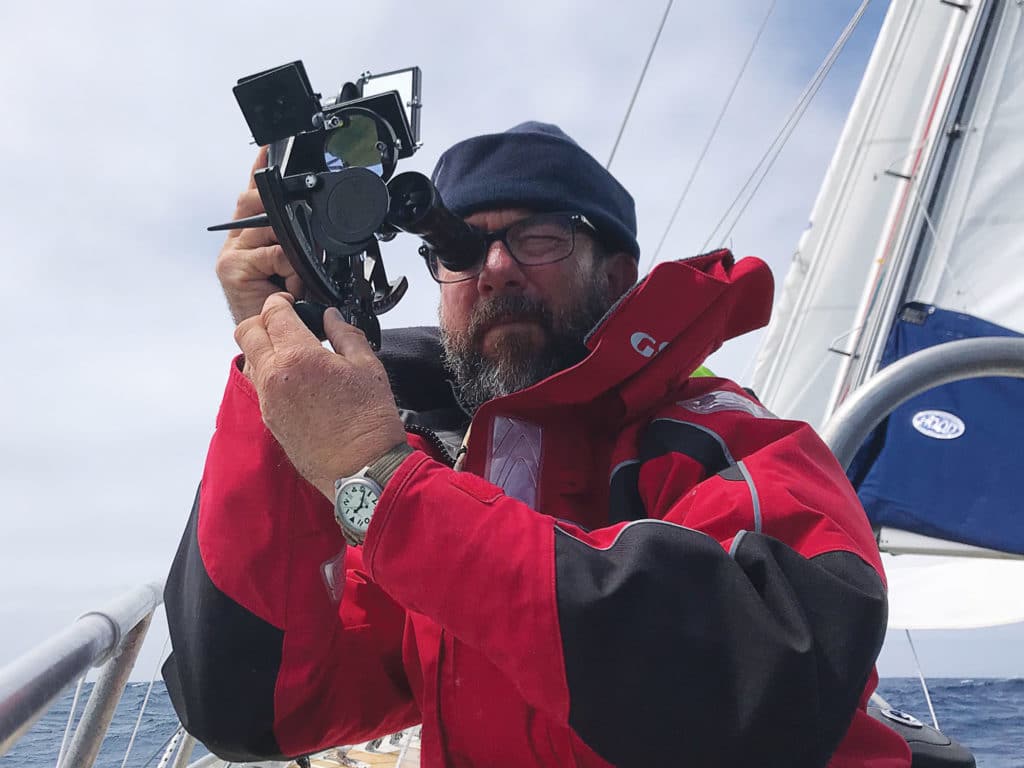
At 1400, we reached the bottom of the low, and the barometer flattened out at 989. The wind roared. Mo shuddered in its force. The log read: “Seas massive; some plunge-breaking.” Two hours later: “A crazy, mishmash heavy sea. Pyramidal.” At 1700: “Long gusts to 50. Working jib down to a hanky.” Later that night: “Our first screaming surf down a wave I cannot see.”
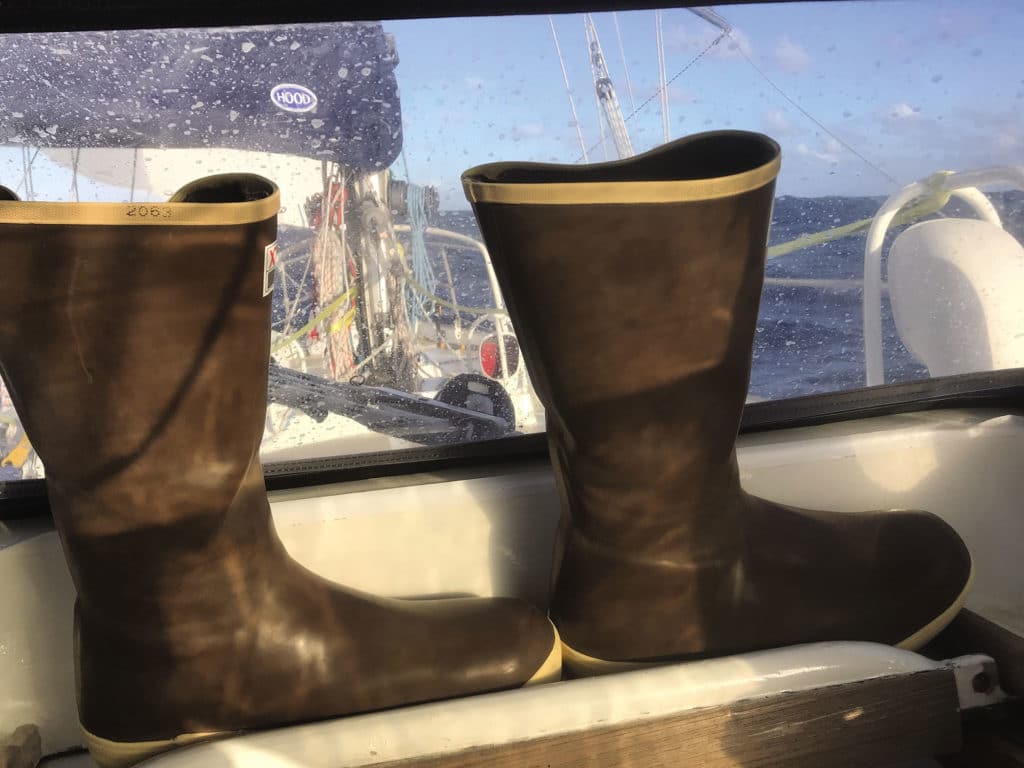
To this point, Mo had been sure-footed. Always at the center of the surrounding chaos, her decks seemed as still and solid as Mother Earth. Yes, there were times when she stumbled, fell off a breaker and was thrown over to the windows, but she came back to rights and shook off things so quickly that the fall seemed hardly worth mentioning. Only when I went on deck did the fierceness of the gale become apparent.
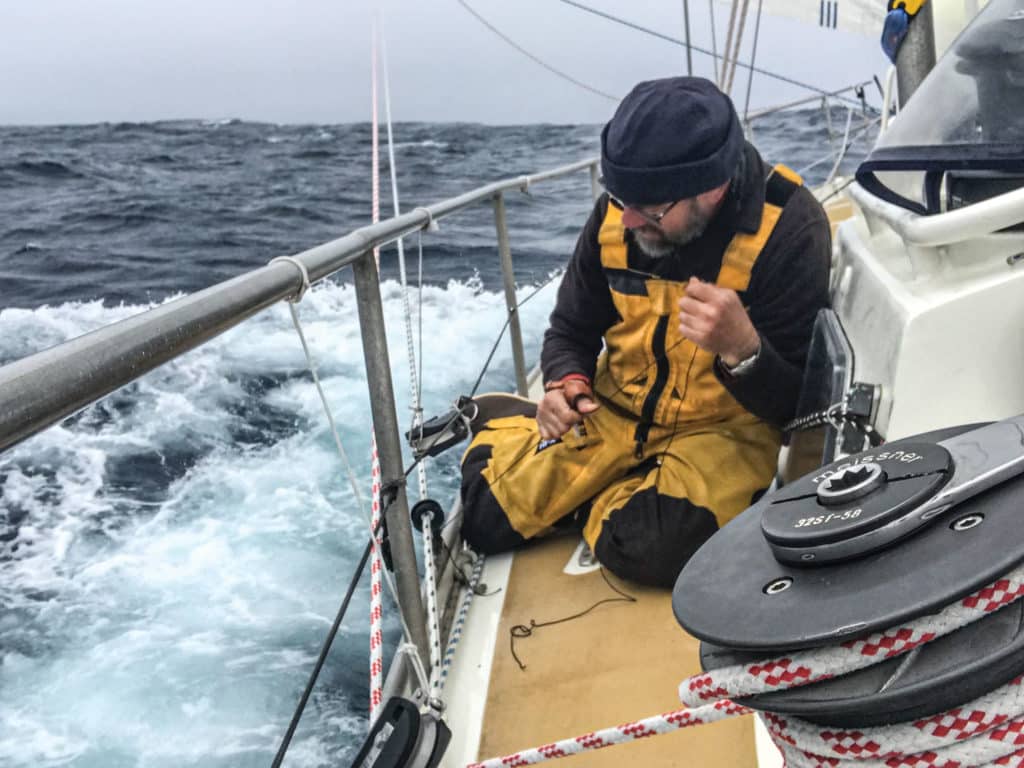
On deck, I moved aft to adjust the windvane when I heard a crashing from the blackness astern. But I did not look aft, I looked up—and there a white wall hung for a moment. I leaped for the rail as it consumed the boat. Mo rolled. She was under. Immediate cold down foulies and boots. And then she was up. Cockpit a bathtub. Sheets trailing in the water. The main halyard was wrapped around my leg. Amazingly, there was no damage.
After dinner, I noticed that the barometer had dropped from 1,010 to 1,002 mb in a mere four hours. What had been an easy 20-knot westerly soon veered into the north and hardened.
By 0100, I had been working the boat for 20 hours, was achingly cold and beginning to feel undone. Wind had eased significantly, and with its diminishing, so too the sea subsided. The moment had come to start adding back the sail we’d withdrawn so long ago, but this time I did not. I left Mo with but a handkerchief of a jib, tore off my foulies, and hit the sack. I didn’t even set an alarm.
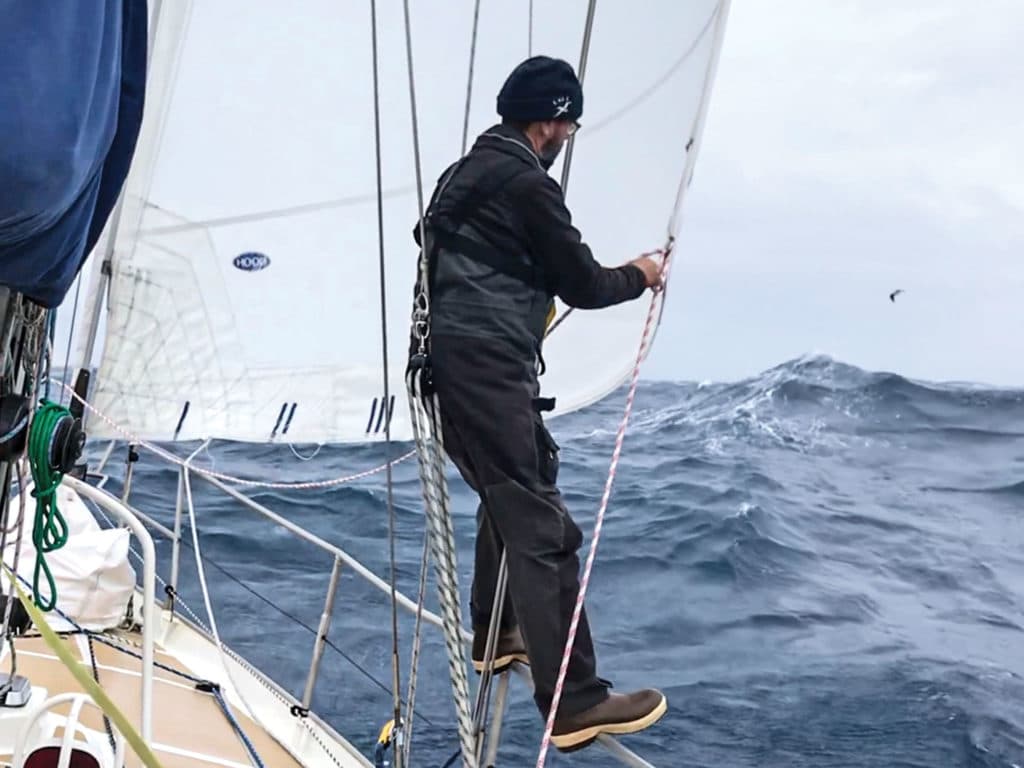
On and on like this goes the Southern Ocean. By February 12, we were below New Zealand; by March 5, we were 5,000 miles due south of San Francisco; and as we descended for the second Cape Horn rounding, Mo and I were weary but battle hardened. This approach proved more tempestuous than the first, but now even dangerously foul weather couldn’t keep us from spying that great rock, that Everest of the watery south. Another gale came on. Mo pointed steadily onward and to within sight of our goal. The seas built. The wind roared. And then all cleared. Cape Horn came out of the abyss—gray, hulking rock not so much barren as raw, and with breakers throwing themselves at her feet. Then we were around, and yet on we raced. On and on and on…
On March 20, 2019—and as part of the figure-eight voyage—Mo and sailor-adventurer Randall Reeves completed a 15,343-mile 110-day circumnavigation of the Southern Ocean but continued north for a first stop in Halifax, Nova Scotia, after 237 days at sea. Coming next month: Mo and Reeves heed the call of the Northwest Passage. For more, check out Reeves’ book-length account of the voyage, available at figure8voyage.com.








